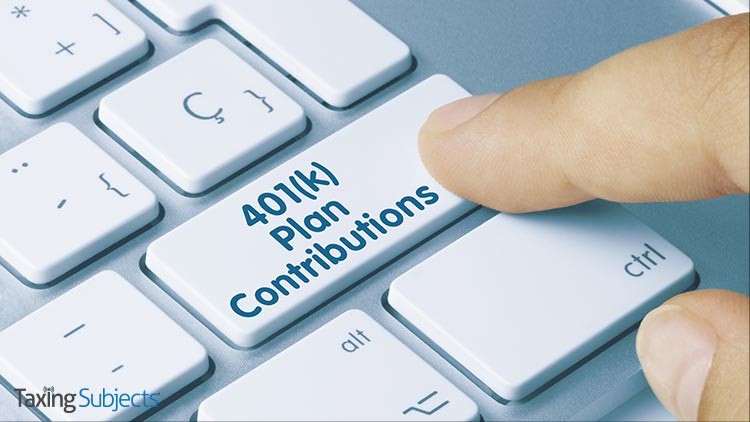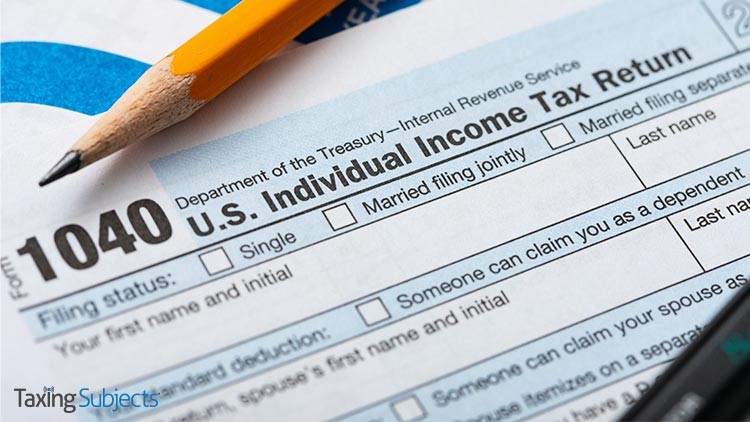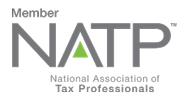by | Nov 27, 2019 | Tax Tips and News
While some parts of the U.S. will be glad to see sunny skies, other areas remain in a drought situation. Parts of the far west, Texas, the south, and Alaska and Hawaii—even parts of Puerto Rico—are dealing with officially declared drought conditions, according to the Department of Agriculture.
Drought can be a serious economic hardship for farmers and ranchers. Some are forced to sell livestock in order to avoid running out of feed or grassland.
But the Internal Revenue Service reminds livestock producers that measures are in place to help blunt the economic effects of the current drought. Those forced into early sales of livestock can get extra time to replace their herds and may also have more time to defer any gains from the forced sales.
Here’s how the IRS deferral can work for eligible farmers and ranchers:
- The one-year extension gives eligible farmers and ranchers until the end of the tax year after the first drought-free year to replace the sold livestock.
- The farmer or rancher must be in an applicable region. An applicable region is a county designated as eligible for federal assistance, as well as counties contiguous to that county.
- The farmer’s county, parish, city or district included in the applicable region must be listed as suffering exceptional, extreme or severe drought conditions by the National Drought Mitigation Center. All or part of 32 states, plus Guam, the U.S. Virgin Islands and the Commonwealths of Puerto Rico and the Northern Mariana Islands, are listed. The list of applicable regions is in Notice 2019-54 on IRS.gov.
- The relief applies to farmers who were affected by drought that happened between Sept. 1, 2018, and Aug. 31, 2019.
- This relief generally applies to capital gains on sales of livestock held for draft, dairy or breeding purposes.
- Sales of other livestock, such as those raised for slaughter or held for sporting purposes, or poultry are not eligible.
- To qualify, the sales must be due only to drought, flooding or other severe weather causing the region to be designated as eligible for federal assistance.
- Farmers generally must replace the livestock within a four-year period, instead of the usual two-year time frame.
- Because the normal drought sale replacement period is four years, this extension immediately affects drought sales that occurred during 2015. However, because of previous drought-related extensions affecting some of these areas, the replacement periods for some drought sales before 2015 are also affected.
Details of the drought-related tax relief for livestock producers, including a sample of how the provisions work, can be found in IRS Notice 2006-82 on IRS.gov.
– Story provided by TaxingSubjects.com
by | Nov 11, 2019 | Tax Tips and News
The Internal Revenue Service has released cost-of-living adjustments for tax year 2020, covering dollar limitations for pension plans and other retirement-related items. The changes are covered in IRS Notice 2019-59, now posted on IRS.gov.
Change Highlights
One of the newsworthy adjustments is an increase in the contribution limit for employees participating in 401(k), 403(b), most 457 plans and the federal government’s Thrift Savings Plan. The limit in all these instances is increased from $19,000 to $19,500.
The limit for catch-up contributions in the specified plans for employees age 50 and over is also boosted, from $6,000 to $6,500. Similarly, the limitation for SIMPLE retirement accounts has been boosted to $13,500 from $13,000 for 2020.
Individual Retirement Arrangement Income Ranges Modified
Income ranges for determining a taxpayer’s eligibility to make deductible contributions to a traditional IRA, to a Roth IRA, or to claim the Saver’s Credit, have all been increased.
Taxpayers can deduct contributions to a traditional IRA if they meet certain conditions.
If during the year either the taxpayer or his or her spouse was covered by a retirement plan at work, the deduction may be reduced or phased out until it is eliminated, depending on filing status and income. (If neither the taxpayer nor his or her spouse is covered by a retirement plan at work, the phase-outs of the deduction do not apply.) Phase-out ranges for 2020 are:
- For single taxpayers covered by a workplace retirement plan, the phase-out range is $65,000 to $75,000, up from $64,000 to $74,000.
- For married couples filing jointly, where the spouse making the IRA contribution is covered by a workplace retirement plan, the phase-out range is $104,000 to $124,000, up from $103,000 to $123,000.
- For an IRA contributor who is not covered by a workplace retirement plan and is married to someone who is covered, the deduction is phased out if the couple’s income is between $196,000 and $206,000, up from $193,000 and $203,000.
- For a married individual filing a separate return who is covered by a workplace retirement plan, the phase-out range is not subject to an annual cost-of-living adjustment and remains $0 to $10,000.
The income phase-out range for taxpayers making contributions to a Roth IRA is $124,000 to $139,000 for singles and heads of household, up from $122,000 to $137,000.
For married couples filing jointly, the income phase-out range is $196,000 to $206,000, up from $193,000 to $203,000.
The phase-out range for a married individual filing a separate return who makes contributions to a Roth IRA is not subject to an annual cost-of-living adjustment and remains $0 to $10,000.
The Saver’s Credit (also known as the Retirement Savings Contributions Credit) for low- and moderate-income workers has an income limit of $65,000 for married couples filing jointly, which is up from the old limit of $64,000. The limit for heads of household was increased to $48,750; up from $48,000. Singles and married taxpayers filing separately will see their income limit increase from $32,000 to $32,500.
Annual contributions to an IRA remain capped at $6,000. The additional catch-up contribution limit for individuals 50 and over is not subject to an annual cost-of-living adjustment and remains at $1,000.
For additional details on retirement-related cost-of-living adjustments, check out IRS Notice 2019-59 posted on IRS.gov.
– Story provided by TaxingSubjects.com
by | Nov 8, 2019 | Tax Tips and News
A recent Internal Revenue Service press release revealed the tax year 2020 annual inflation adjustments, which affect a number of tax items, including marginal tax rates, the Alternative Minimum Tax, the Earned Income Credit, and more. While the IRS notes that there are “more than 60 tax provisions” addressed by the adjustments, the first item highlighted in the release is the failure to file penalty.
Taxpayers who neglect to file a tax return or extension by the federal filing deadline may be charged a failure to file penalty in addition to their tax owed. The IRS says that—because of the Taxpayer First Act—the failure to file penalty will be higher for tax year 2020 returns that will be due in April 2021. In subsequent years, the penalty will be adjusted for inflation, likely as a relevant deterrent to missing the filing deadline.
The rest of the bulleted items specifically cited in the release—more than a dozen in total—cover a range of issues that the agency says should be “of greatest interest to most taxpayers.” Here is the list published in IR-2019-180:
- The standard deduction for married filing jointly rises to $24,800 for tax year 2020, up $400 from the prior year. For single taxpayers and married individuals filing separately, the standard deduction rises to $12,400 in for 2020, up $200, and for heads of households, the standard deduction will be $18,650 for tax year 2020, up $300.
- The personal exemption for tax year 2020 remains at 0, as it was for 2019, this elimination of the personal exemption was a provision in the Tax Cuts and Jobs Act.
- Marginal Rates: For tax year 2020, the top tax rate remains 37% for individual single taxpayers with incomes greater than $518,400 ($622,050 for married couples filing jointly). The other rates are:
- 35% for incomes over $207,350 ($414,700 for married couples filing jointly);
- 32% for incomes over $163,300 ($326,600 for married couples filing jointly);
- 24% for incomes over $85,525 ($171,050 for married couples filing jointly);
- 22% for incomes over $40,125 ($80,250 for married couples filing jointly);
- 12% for incomes over $9,875 ($19,750 for married couples filing jointly).
The lowest rate is 10% for incomes of single individuals with incomes of $9,875 or less ($19,750 for married couples filing jointly).
- For 2020, as in 2019 and 2018, there is no limitation on itemized deductions, as that limitation was eliminated by the Tax Cuts and Jobs Act.
- The Alternative Minimum Tax exemption amount for tax year 2020 is $72,900 and begins to phase out at $518,400 ($113,400 for married couples filing jointly for whom the exemption begins to phase out at $1,036,800).The 2019 exemption amount was $71,700 and began to phase out at $510,300 ($111,700, for married couples filing jointly for whom the exemption began to phase out at $1,020,600).
- The tax year 2020 maximum Earned Income Credit amount is $6,660 for qualifying taxpayers who have three or more qualifying children, up from a total of $6,557 for tax year 2019. The revenue procedure contains a table providing maximum credit amounts for other categories, income thresholds and phase-outs.
- For tax year 2020, the monthly limitation for the qualified transportation fringe benefit is $270, as is the monthly limitation for qualified parking, up from $265 for tax year 2019.
- For the taxable years beginning in 2020, the dollar limitation for employee salary reductions for contributions to health flexible spending arrangements is $2,750, up $50 from the limit for 2019.
- For tax year 2020, participants who have self-only coverage in a Medical Savings Account, the plan must have an annual deductible that is not less than $2,350, the same as for tax year 2019; but not more than $3,550, an increase of $50 from tax year 2019. For self-only coverage, the maximum out-of-pocket expense amount is $4,750, up $100 from 2019. For tax year 2020, participants with family coverage, the floor for the annual deductible is $4,750, up from $4,650 in 2019; however, the deductible cannot be more than $7,100, up $100 from the limit for tax year 2019. For family coverage, the out-of-pocket expense limit is $8,650 for tax year 2020, an increase of $100 from tax year 2019.
- For tax year 2020, the adjusted gross income amount used by joint filers to determine the reduction in the Lifetime Learning Credit is $118,000, up from $116,000 for tax year 2019.
- For tax year 2020, the foreign earned income exclusion is $107,600 up from $105,900 for tax year 2019.
- Estates of decedents who die during 2020 have a basic exclusion amount of $11,580,000, up from a total of $11,400,000 for estates of decedents who died in 2019.
- The annual exclusion for gifts is $15,000 for calendar year 2020, as it was for calendar year 2019.
- The maximum credit allowed for adoptions for tax year 2020 is the amount of qualified adoption expenses up to $14,300, up from $14,080 for 2019.
To learn more about the tax year 2020 annual inflation adjustments, the IRS suggests reading Revenue Procedure 2019-44.
Source: IR-2019-180
– Story provided by TaxingSubjects.com
by | Nov 4, 2019 | Tax Tips and News
In a matter of weeks the 2020 filing season will be underway. To help ensure that taxpayers don’t get caught unprepared, the IRS is recommending everyone to act now to avoid any tax-time surprises and ensure smooth processing of 2019 tax returns.
As part of a series of reminders, the IRS has put together a special page on IRS.gov that outlines steps taxpayers can take to get ready for the upcoming filing season. We’ll start with the basics.
Adjust Withholding
It’s a good idea to a paycheck or pension income checkup; if a taxpayer got a smaller-than-expected tax refund than expected or owed an unexpected tax bill, it’s especially important. In fact anyone who’s had a life event during the past year – a marriage, a divorce, having or adopting a child, retiring, buying a home, or starting college – should do an income checkup. Use the IRS Tax Withholding Estimator to find the best options.
If the Tax Withholding Estimator recommends a change, an employee can then submit a new Form W-4, Employee’s Withholding Allowance Certificate, to their employer. Do not send this form to the IRS.
Taxpayers who have pension or annuity income can also use the results from the estimator to complete Form W-4P, Withholding Certificate for Pension or Annuity Payments, and give it to their payer.
Taxpayers who receive a substantial amount of non-wage income should make quarterly estimated tax payments. This can include self-employment income, investment income (including gain from the sale, exchange or other disposition of virtual currency), taxable Social Security benefits and in some instances, pension and annuity income. Making estimated tax payments can also help a wage-earner cover an unexpected withholding shortfall.
Estimated tax payments are due quarterly, with the last payment for 2019 due on Jan. 15, 2020. Form 1040-ES, Estimated Tax for Individuals, has a worksheet to help figure these payments. Payment options can be found at IRS.gov/payments.
Got a part-time job in the gig economy? Workers and retirees who get self-employment income or wages from the gig economy (this includes payments in virtual currency) should make sure to include these amounts when filling out the Tax Withholding Estimator. That’s because payments received in virtual currency by independent contractors and other service providers are taxable. Self-employment rules generally apply.
In most cases, payers have to issue Form 1099-MISC, and wages paid in virtual currency are taxable to the employee, subject to withholding, and must be reported by the employer on Form W-2.
For more complex tax situations check out Publication 505, Tax Withholding and Estimated Tax. Pub 505 is also the place to go for taxpayers who owe alternative minimum tax (AMT) or various other taxes, or those with long-term capital gains or qualified dividends.
Get Organized
When it comes to taxes, nothing helps smooth the process like organization. Taxpayers should have some sort of recordkeeping system, whether electronic or paper, that keeps important information in one place. Remember that copies of filed tax returns and their supporting documents should be retained for at least three years. This includes year-end Forms W-2 from employers, Forms 1099 from banks and other payers, other income documents, records documenting all virtual currency transactions, and Forms 1095-A for those claiming the Premium Tax Credit.
It seems to be a natural instinct for taxpayers to fire off their income tax returns the minute the IRS starts accepting them, thinking it will get their refund quicker. This can actually be counter-productive. Many times these “early bird” returns are completed without all the documentation needed – like the year-end Form W-2. If a return is missing documentation, the taxpayer will have to file an amended return to make it right and the IRS says amended returns could take up to 16 weeks to transmit a refund.
The lesson here is to gather all the year-end income documents before a 2019 return is e-filed. In addition, notify the IRS of any address changes and notify the Social Security Administration of a legal name change to avoid refund delays.
Renew expiring ITINs
Taxpayers with expiring Individual Taxpayer Identification Numbers can get their ITINs renewed more quickly and avoid refund delays next year by submitting their renewal application – and doing it quickly.
An ITIN is a tax ID number used by any taxpayer who doesn’t qualify to get a Social Security number. Any ITIN with middle digits 83, 84, 85, 86 or 87 will expire at the end of this year. In addition, any ITIN not used on a tax return in the past three years will expire. ITINs with middle digits 70 through 82 that expired in 2016, 2017 or 2018 can also be renewed.
The IRS urges anyone affected to file a complete renewal application, Form W-7, Application for IRS Individual Taxpayer Identification Number, as soon as possible. Be sure to include all required ID and residency documents. Failure to do so will delay processing until the IRS receives these documents.
It takes about seven weeks from the time a completed form is filed to the time an ITIN assignment letter from the IRS is received. But that time frame expands to 9-11 weeks if an applicant waits until the peak of tax filing season to submit the form – or if the form is sent from overseas.
Taxpayers who fail to renew an ITIN before filing a tax return next year could face a delayed refund and may be ineligible for certain tax credits. Applying now will help avoid the rush as well as refund and processing delays in 2020. For more information, visit the ITIN information page on IRS.gov.
File Electronically and Use Direct Deposit
The vast majority of tax professionals already know that the fastest, most reliable way to get a tax return to the IRS is through e-filing. Whether the taxpayer employs a tax pro to do their return, or files themselves, electronic filing is the way to go.
A statement from the IRS says electronic transmission works best, no matter which direction it’s headed. “Combining Direct Deposit with electronic filing is the fastest way to get a refund. With Direct Deposit, a refund goes directly into the taxpayer’s bank account. No need to worry about a lost, stolen or undeliverable refund check. This is the same electronic transfer system used to deposit nearly 98% of all Social Security and Veterans Affairs benefits. Nearly four out of five federal tax refunds are deposited directly.”
By law, the IRS cannot issue refunds for people claiming the Earned Income Tax Credit (EITC) or Additional Child Tax Credit (ACTC) before mid-February. The law requires the IRS to hold the entire refund − even the portion not associated with EITC or ACTC. This law change, which took effect in 2017, helps ensure that taxpayers receive the refund they’re due by giving the IRS more time to detect and prevent fraud.
A word of caution about refund expectations: don’t rely on getting a refund by a certain date, especially when making a major purchase or paying bills. Some returns need additional review and may take longer to process.
For example, the IRS, along with its partners in the tax industry who serve on the Security Summit, continue to strengthen security review processes to help protect against identity theft and refund fraud. Some of these reviews may require longer to complete and therefore may delay a refund.
Looking for more information? The Let Us Help You page on IRS.gov features links to information and resources on a wide range of topics.
– Story provided by TaxingSubjects.com









